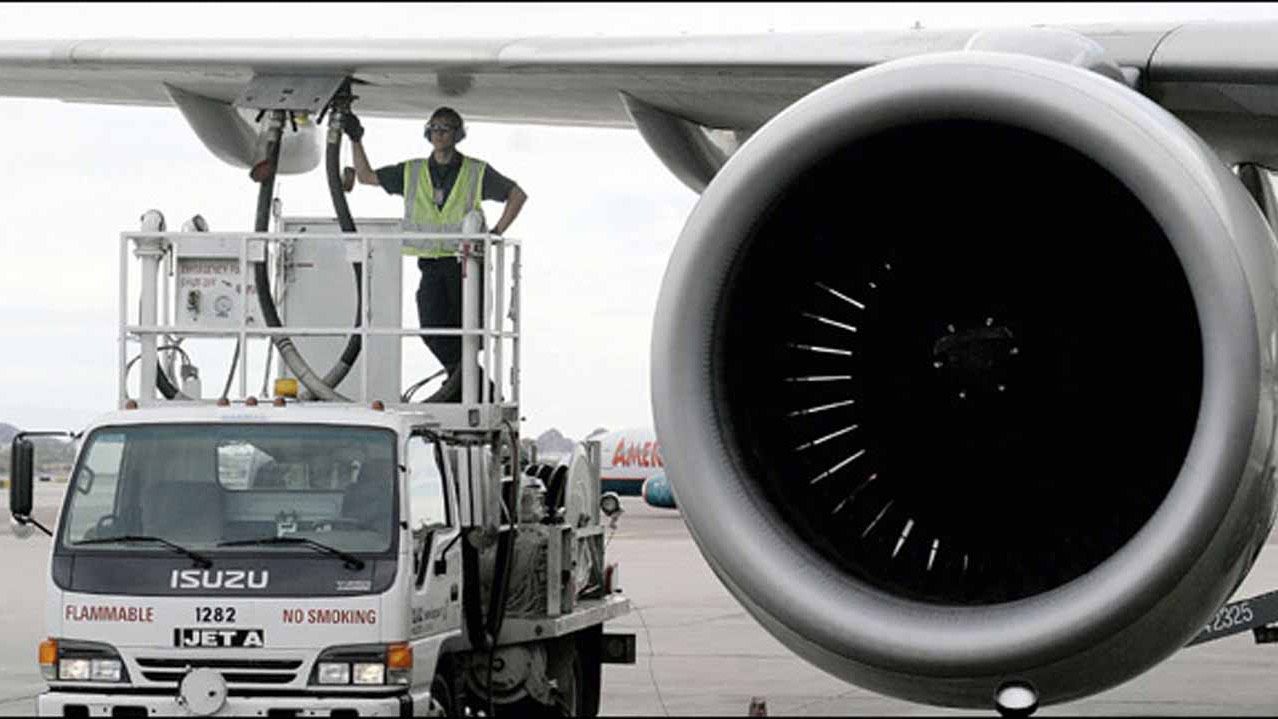U.S. Rep. Kai Kahele sees a future for Hawaii as a producer of sustainable aviation fuel.
At a hearing by House Committee on Transportation’s aviation subcommittee on Tuesday, the representative, gubernatorial candidate and part-time Hawaiian Airlines pilot asked an industry expert how the state could leverage its resources to become a commercial-scale producer.
At a hearing by House Committee on Transportation‘s aviation subcommittee on Tuesday, the representative, gubernatorial candidate and part-time Hawaiian Airlines pilot asked an industry expert how the state could leverage its resources to become a commercial-scale producer.
The exchange came amid a broader discussion of the Biden administration’s SAF Grand Challenge, aimed at reducing the cost and expanding the supply of sustainable aviation fuel, and two legislative measures that would also support SAF production.
Kahele noted that jet fuel accounts for a higher proportion of petroleum consumption than any other energy sector in Hawaii.
“As the state moves toward sustainable aviation fuels, this will allow our state to reduce fossil fuel impacts on the environment, improve the health of the state’s communities and provide sustainable new business opportunities," he said.
Among the measures Congress is considering this session are the Sustainable Skies Act, which includes a tax credit for SAF that achieves a 50% of better reduction of emissions compared to fossil-based jet fuel, and the Senate’s Aviation Emissions Reduction Opportunity Act, which would fund infrastructure and technology grants to airports to build SAF infrastructure.
Kahele said the measures would “allow the state to develop and establish new economic opportunities, creating jobs and establishing a sustainable aviation fuel program in the state to fuel the large number of domestic and international flights that operate and transit the Hawaiian islands each day.”
Kahele noted Hawaii has the environment and conditions to grow biomass feedstock and has the potential to develop so-called green hydrogen. But how can Hawaii turn those assets into commercial-scale SAF production, Kahele asked John Plaza, president and CEO of SkyNRG Americas, which develops SAF production projects based primarily on waste-based feedstocks.
Plaza said continued tax credits will help to foster new production projects. However, he said policy needs to catch up with technology if Hawaii and other potential SAF producers are to succeed.
Specifically, Plaza said the Environmental Protection Agency’s Renewable Fuel Standard program, which works to reduce greenhouse gas emissions and expand renewable energy operations, need to approve a broader range of alternative energy sources beyond crop-based fuels, which he said are “limited in scale.”
Plaza said green hydrogen, renewable natural gas and other sources should be included in the drive to develop more clean fuels.
“Hawaii can be a meaningful participant in this space,” Plaza said. “You do have the resources to enable these new technologies.
“It’s an exciting time, but we do need leadership and new policies both from the tax side and the regulatory side by EPA,” he said.
Michael Tsai covers local and state politics for Spectrum News Hawaii.



